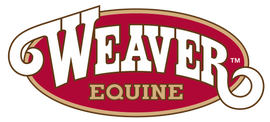
Core Fundamentals of Training
The first 90 days of training on a horse is one of the most important pieces of a horse’s development. A good experience with a skilled rider can bring about a confident and broke horse. A bad experience can bring about a nervous horse and bad habits that might take months to fix – if they can be fixed at all.
Too many people try and force complicated performance horse maneuvers onto a horse before it understands the simple concept of how to carry itself. For the first few months, it is critical to keep everything simple. Teach your horse the basics before moving on to more complex training. They are sponges when it comes to learning, enjoy the process and let them soak up the right kind of information.
Here are some of the core fundamentals to keep in mind when starting the teaching process with your colts and fillies.
Give and Release
The number one most important thing to teach a horse is to give to pressure, even from the beginning when you are teaching the foal to lead on a halter. The way you should go about this is to pull, and when they move in the direction of the pull, release. As you gain the foal’s trust, odds are, they will start to get into your space. Teaching them to move away from pressure is also significant. Young horses need to learn to respect your space.
These same philosophies continue on for the rest of your partnership with the horse. When you pull your reins a certain way, they should follow their nose. When you apply your leg onto their side, they should move away from that pressure. Every time your horse moves toward your pull or away from your pressure, you release. By releasing, you are rewarding the good behavior, reinforcing good habits.
Forward Motion
Before ever training a horse to collect or lope slow, you must first let them learn to carry themselves. This can only be accomplished by pushing them into forward motion. Allowing them free movement and forward motion gives them a chance to figure out their own legs and to relax while you are on their back. By making the early stages not a “big deal,” you will have a confident and willing horse when you start to incorporate collection and varying speeds.
Kicking and squeezing with your legs should be used to encourage forward motion from your horse, but make sure that you are using clear communication. If your hand is pulling, but you are kicking, that is a conflicting cue for young horses (and for many broke ones as well). Keep you hands forward, cluck before resorting to your legs, and then use your legs as needed.
Important note: Always start with your vocal cues before taking action, not just during the action. Give them the chance to make the right choice before using force.
Whoa
This is a big one, not just for practicality, but also for safety. Teaching a horse to stop off of your voice can quickly resolve a situation that might otherwise be dangerous, for horse or rider.
Whoa should be a word that every horse understands and responds to. In addition to your voice, horses should also stop if you pull back on your reins with relaxed legs or if you put your legs forward and sink into your seat.
If you train your horse properly, eventually you should not have to do all three of these things to make your horse stop movement.
In summary, be kind and patient with your young horses. Your goal is to create a confident and happy horse that respects your space and cues. If your horse understands its job and you continue to communicate effectively with your four-legged partner, then you can look forward to some of the most fun and satisfying rides of your life.
Sincerely Yours, Guest Writer Grace Bentien








